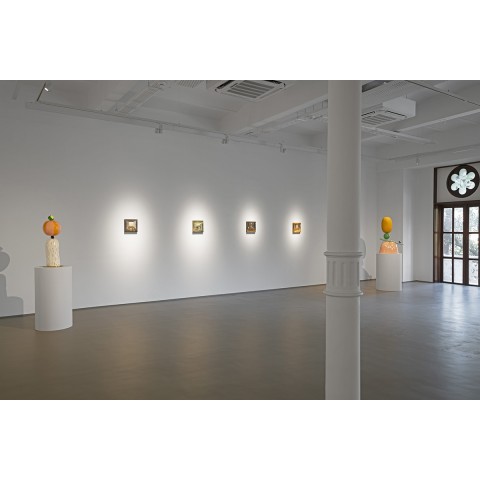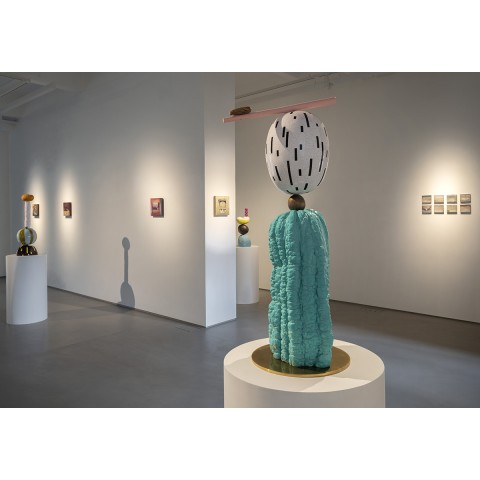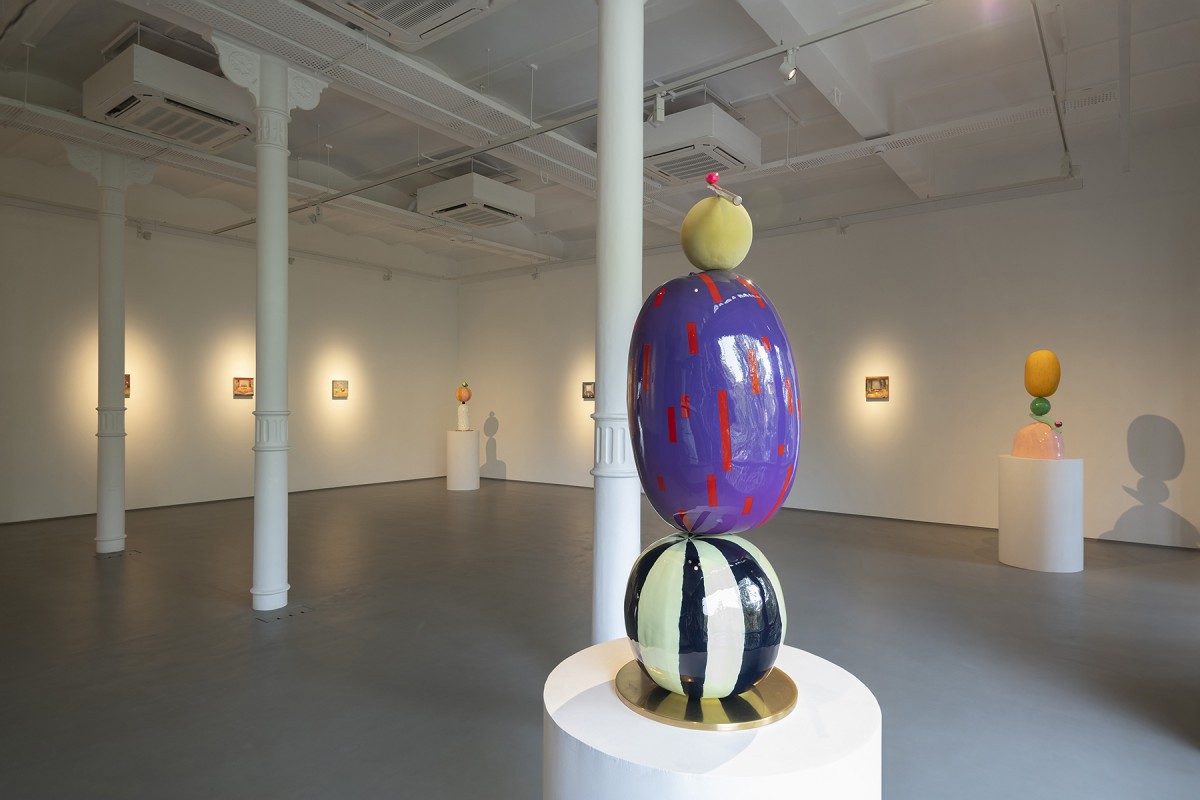
THE RETURN OF THE BAROQUE: JONATHAN TRAYTE & REBECCA SHARP
November 09 - December 16 , 2023
At first glance, Rebecca Sharp
and Jonathan Trayte might seem to have little in common. A painter, Sharp (born
1976) emerges from an American-Brazilian background. She is closely engaged
with the shamanic and carnivalesque energies of Brazil’s popular culture. She
works, also, through an ongoing critical conversation with the women artists of
the 20th-century avant-gardes and their incandescent legacies of
experiment in life and art, which had until recently been under-regarded. A
sculptor, Trayte (born 1980) was born in Huddersfield in the north of England
and spent time in South Africa as a child. He has worked as a sous chef at a
farmers’ market and restaurant, and is preoccupied with the forms, colours and
circulations of a consumption-oriented mass culture that has come to be defined
largely by supermarkets, restaurants and cafés. And yet, marvellously, even
magically, their oeuvres come together in a generative space of dialogue.
Sharp, whose paintings draw as
much on the vibrant folk-Catholicism of South America as on the surrealism of
Leonora Carrington, invites us to open ourselves to the plural dimensions of
space, time and identity that we inhabit, and which we do not always
acknowledge. Trayte, whose sculptures gesture as much towards Claes Oldenburg
as towards Ettore Sottsass, urges us to blur the genre distinctions we make
between materials and experiences, underlines the similarity between sugar and
glass, flour and plaster. What strikes me most compellingly is that both these
artists return – by routes that are quite distinct and through emphases that do
not coincide – to the legacy of the Baroque in all its grand extravagance. Both
Sharp and Trayte reclaim the special gifts of the Baroque: its self-aware and
astute theatricality, which at its best was not an escape into fantasy but,
rather, a sublime enlargement of the alternatives to a constrained normality;
and its capacity for defying the proprieties and exceeding the limits of
medium, spatial context and intended audience.
*
Sharp’s paintings act as zero-gravity spaces or
miniature proscenium theatres in which figures, elements and signals align themselves
into enigmatic constellations. In these oneiric scenarios – richly inspired and
nourished by Brazil’s pre-Columbian and Afro-Brazilian cultures, yet also
informed by the artist’s transhistorical kinship with Yves Tanguy and Frida
Kahlo – bejewelled fruits and crystalline geodes float alongside totem poles
and talismans, while guardian figures
conduct rites of transfiguration. Are they spirit guides waving wands, interstellar
visitors powered by light beams, phantoms, or Tantric guardians of deep psychic
realms? Sharp earned a master’s degree in Buddhist philosophy and is a questor
who cherishes viscerally transformative liminal experiences. Accordingly, her
paintings can come across as visual anthologies of hymns, anthems and
incantations, grimoires that spell out vital reserves of hope, resistance and
resurrection. In one of them, we encounter a banner blazoned with the title of
a Cynthia Luz song, “Eu nãu sou daqui”:
I’m not from here.
We sense the thrum of the
carnival in these works, with its entwined currents of passion and death, its
simultaneous unfolding of lives and afterlives, its choreography of ecstasy and
risk. This is not to romanticise or exoticise Brazil. As a gay person, Sharp is
painfully aware of Brazil’s contradictions. On the one hand, its gloriously
kaleidoscopic mix of Native, African and European cultures has given birth to a
surging creative freedom and an organic cosmopolitanism. On the other, the
country suffered decades of military dictatorship supported by the
arch-conservative sections of society; racism, transphobia and implacable
hostility towards the queer community have long been endemic features of Brazilian
collective life.
Shuttling between vistas of
extinction and the palpability of detail, mythic frameworks premised on
infinity and the clock time of history that is predicated on finitude, Sharp regards
herself as bearing the responsibility of the witness who can stand apart from a
human-centric narrative, and testify to processes of creation, destruction and
healing that involve all beings. She finds herself reminded of a teaching from
the Mahayana Prajnaparamita Sutras:
“Emptiness is form; form is emptiness.”
*
Trayte’s sculptures occupy a
shifting domain between toy, vitrine artefact, popular votive and commercial
fetish. They remind us of an East Asian-style display of ceramic or plastic
facsimiles of food laid out as a visual menu, with the intention of assisting
tourists across differences of language and culture. In Trayte’s handling, it
is vividly transformed into a marketplace iconography that can be fetishised
upward through labelling and branding. These sculptural provocations address,
with stylish vigour, a suite of themes that fascinated the pioneers of Pop Art:
food, leisure, the life of the street, advertising imagery, the effervescence
of the everyday. Trayte’s experiences in the domain of the culinary arts appear
to have informed his work as a visual artist. As we savour the felicity with
which he conceives, composes and assembles his sculptures, we sense, at work,
an expertise in combining flavours and sensations, in plating and presenting an
offering that appeals to several senses at once.
Trayte revels in the use of materials
culled from the everyday life of global capital: vinyl, aluminium foam, steel,
fabric, concrete. His forms direct us towards the temporalities of germination
and fruiting, fermentation and curing, boiling and refrigerating. Even as they
celebrate the vital pleasures of the table, these objects suggest that we pause
in our consumerist tracks and look more dispassionately behind our lavish
surfaces, our insatiably Rabelaisian appetites. In a move at once tender and
whimsical, Trayte’s sculptures also achieve a symbolic life of their own,
independently of these associations, as objects that seem part-cybernetic and
part-horticultural, seemingly awaiting a future in which they can properly
fulfil their destiny. This realisation may lead some of us to stand back and
look again, and look more closely, at his work.
Take away the insistent presence
of colour, as a thought experiment, and we may find that a number of Trayte’s
sculptures have far more in common with certain stand-alone modernist works in
three dimensions, which occupy a midground between maquette and monument,
astoundingly managing to combine the fragility of the former with the
confidence of the latter. Importantly, these works encourage an expansiveness
of association while retaining a self-possessed formal integrity. This would be
the point at which to recall that, as a child, he had lived close to the
Yorkshire Sculpture Park in West Bretton, Wakefield – and played among the
Henry Moore and Barbara Hepworth sculptures there.
Despite their very different
starting points, Rebecca Sharp and Jonathan Trayte offer us surprising visions
of contemporary global experience in all its interwoven and multi-layered
complexity. They respond to impulses within the avant-garde traditions of 20th-century
art, not by merely treating these as quotations, but by translating the
art-historical archive into living, artisanal material that can be played with
and reconfigured. At the same time, they are also robustly and intimately
responsive to the public culture and popular traditions of the societies in
which they grew up. Significantly, each of these artists brings their larger
cultural explorations back to bear on the singular painting and sculpture,
which are not dispersed or expanded into larger assemblages or installations. Together,
Sharp and Trayte urge us to become active and attentive pilgrims again, rather
than indolent passengers riding the algorithmic cascades of narcissism and
complacency.
*
-Ranjit
Hoskote
Images

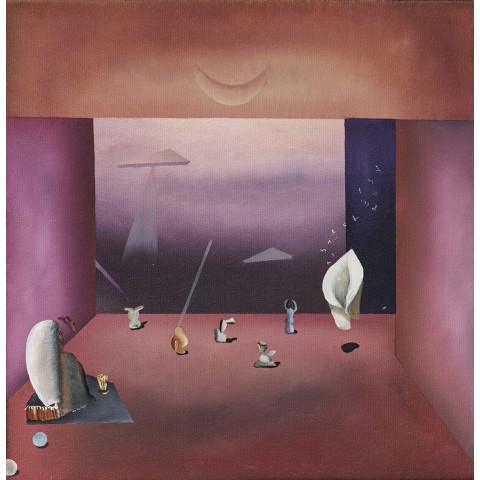
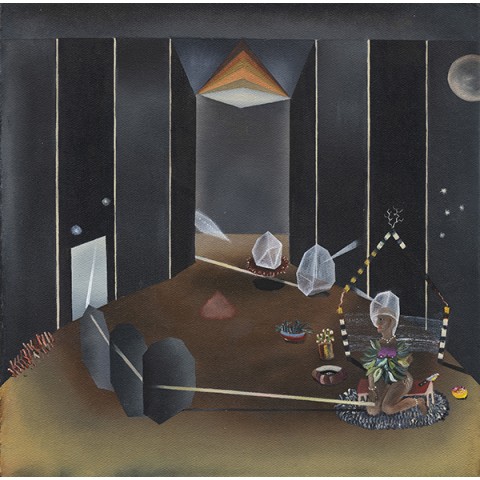
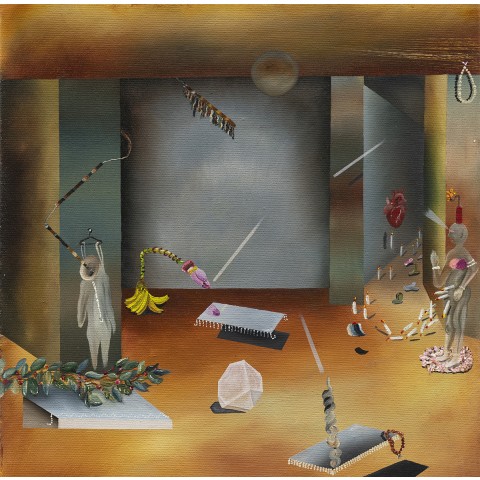
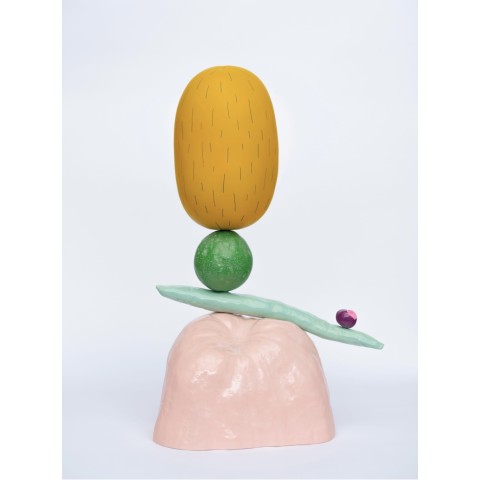
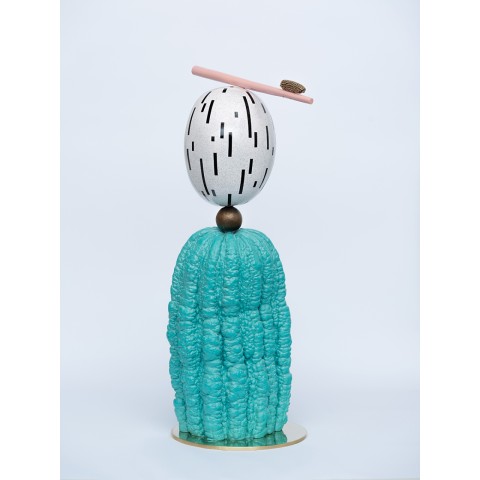


Installation

